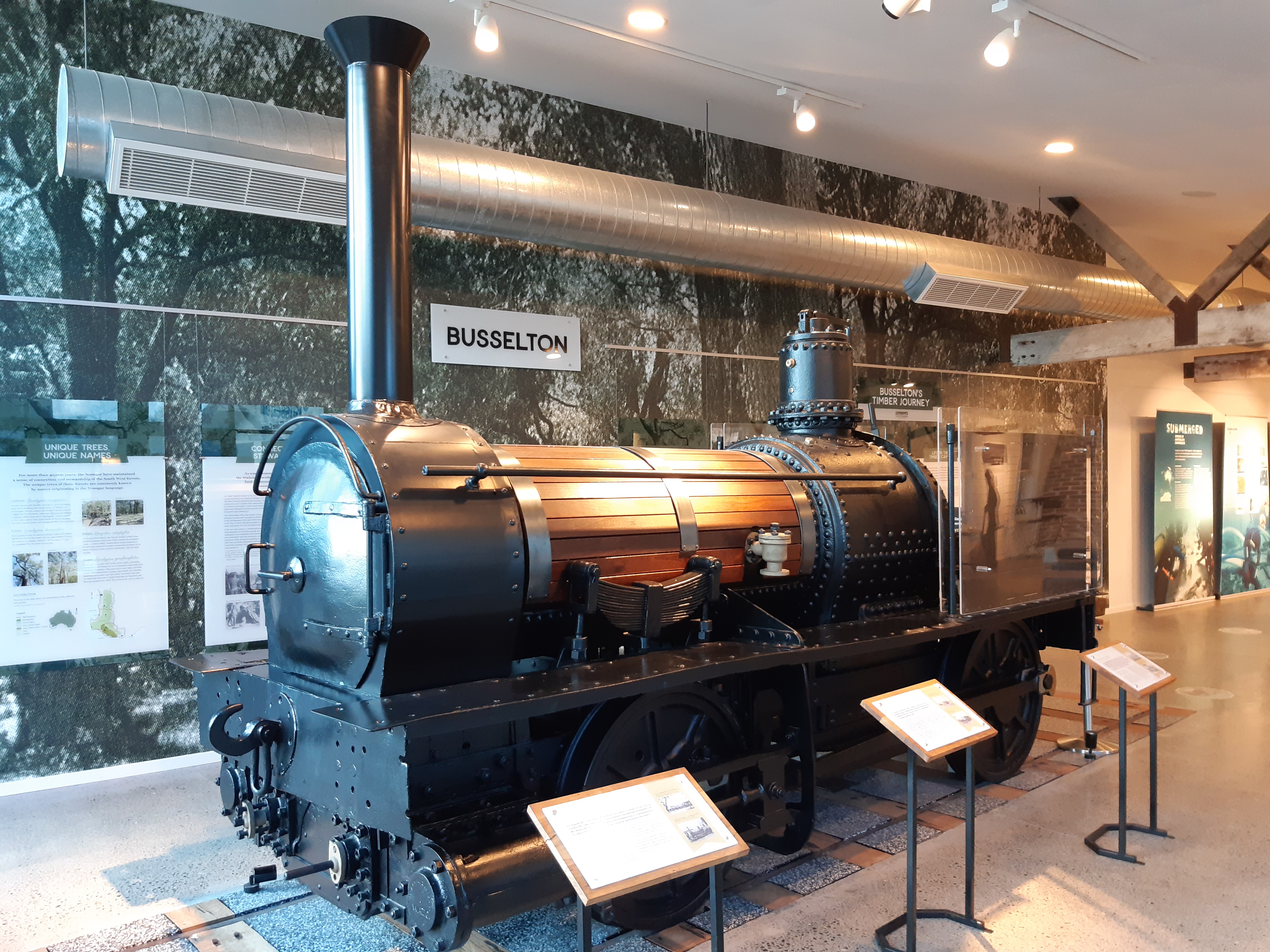Ballaarat Steam Engine on:
[Wikipedia]
[Google]
[Amazon]
 The Ballaarat steam engine, built by James Hunt's Victoria Foundry in the city of
The Ballaarat steam engine, built by James Hunt's Victoria Foundry in the city of
 ''Ballaarat'' has been featured in
''Ballaarat'' has been featured in
Comprehensive article in ''Light Railway Research Society of Australia'' magazine
{{WAGR Locomotives, state=collapsed Busselton Individual locomotives of Australia Railway locomotives introduced in 1871 Ballaarat 0-4-0 locomotives 3 ft 6 in gauge locomotives of Australia
 The Ballaarat steam engine, built by James Hunt's Victoria Foundry in the city of
The Ballaarat steam engine, built by James Hunt's Victoria Foundry in the city of Ballarat
Ballarat ( ) is a city in the Central Highlands (Victoria), Central Highlands of Victoria (Australia), Victoria, Australia. At the 2021 Census, Ballarat had a population of 116,201, making it the third largest city in Victoria. Estimated resid ...
, Victoria in 1871, was the first gauge locomotive built in Australia. It was purchased by the Western Australian Timber Company, which was awarded one of only three milling concessions granted in the colony. The company had 181,500 acres to mill at Yoganup, near the town of Busselton
Busselton is a city in the South West region of the state of Western Australia approximately south-west of Perth. Busselton has a long history as a popular holiday destination for Western Australians; however, the closure of the Busselton ...
.
History
Active use
The Western Australian Timber Company shipped the locomotive from Victoria to transport timber to the coast over the Ballaarat Tramline from its mill – first located at Yoganup, inland, and later as far as inland. The company had built the colony's first timber-railed railway line (on which timber rails were topped by an iron strap to reduce wear) from the mill to a landing jetty at Lockville, near Wonnerup, north-east of Busselton. Timber milling was the region's biggest industry and timber was the biggest export industry in Western Australia until World War 1. The narrow-gauge locomotive was named ''Ballaarat'' by the mayor of Melbourne, following the alternative spelling of the city where it was built,Ballarat
Ballarat ( ) is a city in the Central Highlands (Victoria), Central Highlands of Victoria (Australia), Victoria, Australia. At the 2021 Census, Ballarat had a population of 116,201, making it the third largest city in Victoria. Estimated resid ...
. The name originated in two Aboriginal
Aborigine, aborigine or aboriginal may refer to:
*Aborigines (mythology), in Roman mythology
* Indigenous peoples, general term for ethnic groups who are the earliest known inhabitants of an area
*One of several groups of indigenous peoples, see ...
words, ''balla'' and ''arat'', meaning "resting place".
The locomotive was used by the Western Australian Timber Company until the mill closed in 1887.
Abandonment and repair
''Ballaarat'' was damaged by fire when it was stored in a shed at Lockville in the early 1900s, then left exposed to the elements in a nearby paddock. What was left of ''Ballaarat'' was later donated by land-owner Percy Reynolds to theMunicipality of Busselton
The Municipality of Busselton was a local government area in Western Australia, centred on the town of Busselton.
It was established on 21 February 1871, separating the town of Busselton from the surrounding Sussex Road District The Sussex Road Di ...
. It was offered to the Western Australian Museum, then the Western Australian Government Railways, who after many years of correspondence, eventually accepted it and moved it to Midland railway workshops for refitting. It was not until 1929, 42 years after it was decommissioned, that ''Ballaarat'' finally received partial repair work thanks to its being featured in a State Centenary parade through Perth.
On display
''Ballaarat'' remained in Perth for several years until the Busselton community intervened in 1934 when they requested the locomotive's return. After three years of lobbying, it returned home and was installed as a display piece in Victoria Square in 1937. There it was visited by many local people and tourists over the years. However, exposure to the elements for 75 years left it weatherbeaten and rusted. It became the oldest remaining Australian-built steam locomotive. In 2012, following a Lotterywest grant, local business South West Machining Centre, a team of volunteers and a rail heritage consultant undertook its preservation works. The locomotive was completely dismantled and more than 550 volunteer hours were recorded. In 2016, when the disused Busselton railway station was moved to the foreshore to become the City of Busselton's visitor centre, ''Ballaarat'' was moved there as part of an innovative museum and conference and function centre, where the remaining work was completed. Restoration was completed in March 2017 and since that time Ballaarat has been on public display, accompanied by information, artefacts and images of the region's timber industry.Live steam model
 ''Ballaarat'' has been featured in
''Ballaarat'' has been featured in Model Engineer
''Model Engineer Magazine'' was first published (in the United Kingdom) to support the hobby of model engineering in 1898 by Percival Marshall, who was to remain its editor for over 50 years. It has been owned by MyTime Media since 2008. The mag ...
magazine as a 5-inch gauge working live steam
Live steam is steam under pressure, obtained by heating water in a boiler. The steam is used to operate stationary or moving equipment.
A live steam machine or device is one powered by steam, but the term is usually reserved for those that ar ...
construction project aimed at the beginner who wants to gain model engineering experience. The model runs on coal or anthracite and has a fully functioning steam boiler of capacity running at 90 psi steam pressure.
See also
* WAGR G class locomotive G233, ''Leschenault Lady''References
External links
Comprehensive article in ''Light Railway Research Society of Australia'' magazine
{{WAGR Locomotives, state=collapsed Busselton Individual locomotives of Australia Railway locomotives introduced in 1871 Ballaarat 0-4-0 locomotives 3 ft 6 in gauge locomotives of Australia